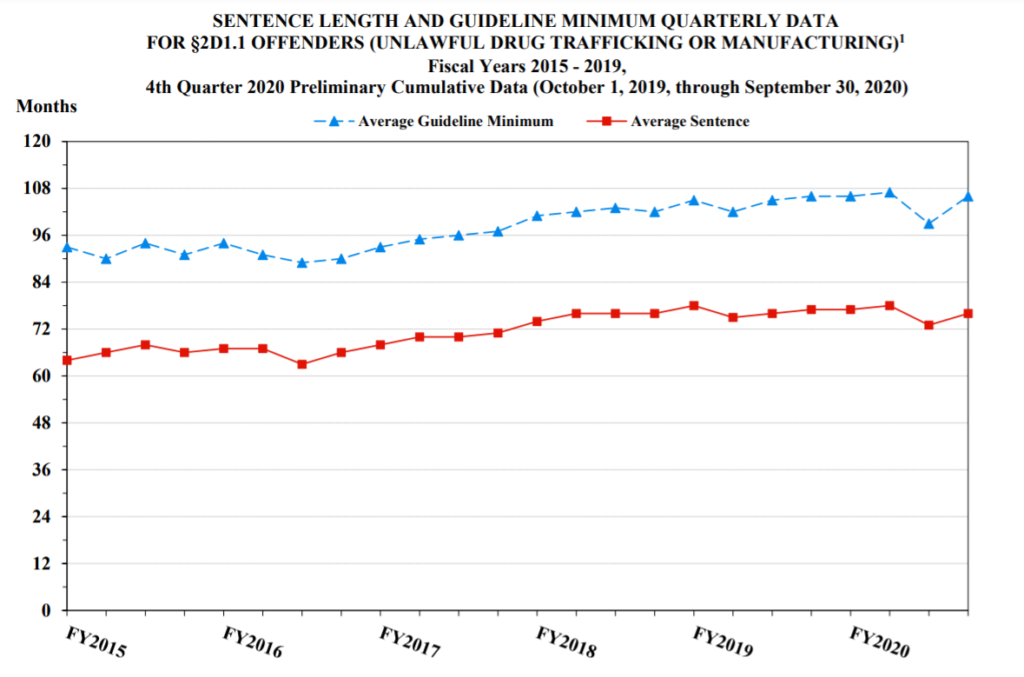
Four Kinds Of Offenses Made Up Nearly 87% Of Cases In FY 2020: Sentencing Commission Report
By a Biometrica staffer
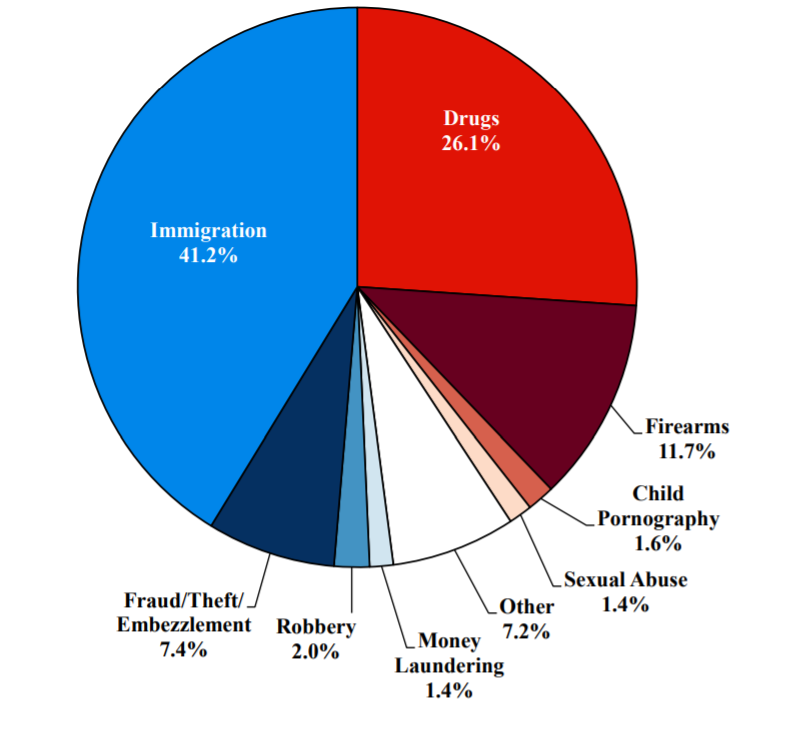
Four types of offenses accounted for 86.4% of all reported cases to the United States Sentencing Commission (called “the Commission” hereon) in fiscal year 2020, according to preliminary data for the period. Of those, immigration cases made up the largest single group of offenses at 41.2%, followed by drugs, firearms, and fraud.
The Commission was created by the Sentencing Reform Act provisions of the Comprehensive Crime Control Act of 1984. It is an independent agency in the Judicial Branch of the federal government.
In FY 2020, i.e. data for the year starting Oct. 1, 2019, through Sept. 30, 2020, the courts submitted about 300,000 documents reporting 64,565 felony and Class A misdemeanor cases to the Commission. That’s 11,973 cases less than those reported in FY 2019, reflecting the effects of the Covid-19 pandemic on the work of the courts, the Commission said in its annual report.
Within those four kinds of offenses, immigration offenses accounted for a larger slice of the pie than they did the year before, when they made up 38.4% of all cases.
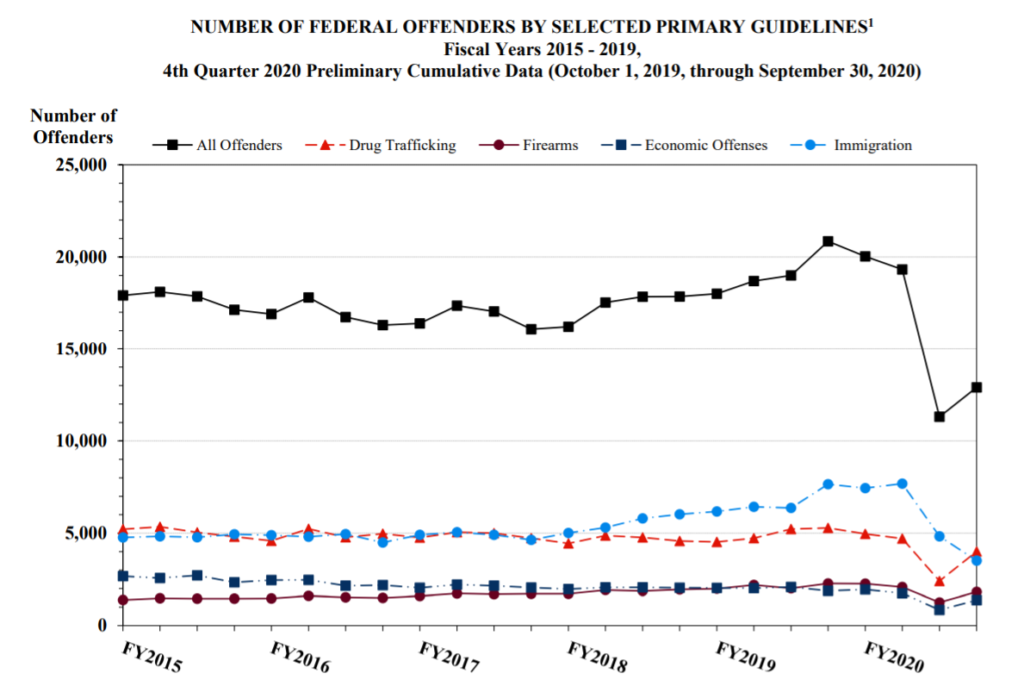
Among drug offenses, those involving methamphetamine were most common, making up 45.7% of all drug cases. Two-thirds (or 66.9%) of drug offenders were convicted of an offense carrying a mandatory minimum penalty, compared to 65.7% of drug offenders in FY 2019.
The average length of imprisonment in methamphetamine cases was unchanged from FY 2019 at 95 months (or nearly 8 years). However, the average sentence imposed decreased across the other major drug types: in crack cocaine cases it went to 74 from 78 months, in powder cocaine cases and in heroin cases it went to 66 from 70, and in marijuana cases to 29 from 31.
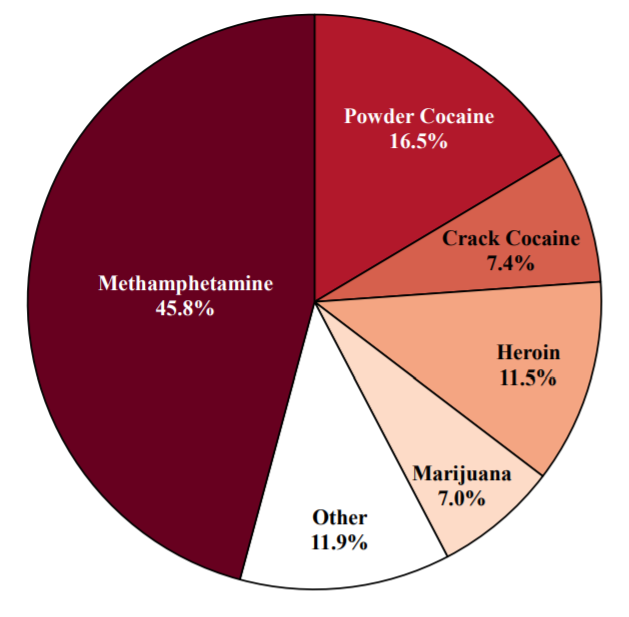
Almost three-quarters (or 73.7%) of all offenders received sentences under the Guidelines Manual, in that the sentence was within the applicable guideline range, or was outside the applicable guideline range and the court cited a departure reason from the Guidelines Manual. Just over half of all sentences were within the guideline
range, compared to 51.4% in FY 2019.
The Commission And Its Focus In Recent Years
The Commission consists of up to seven voting members appointed to staggered six-year terms by the President with the advice and consent of the Senate. By statute, at least three of the commissioners shall be federal judges, and no more than four may be members of the same political party. The Attorney General (or the Attorney General’s designee) and the Chairperson of the United States Parole Commission are ex officio members of the Commission.
For FY 2020, the Commission said it received an annual appropriation of $19,670,000 to continue to fulfill statutory duties envisioned by the Sentencing Reform Act of 1984. It did not request program increases for FY 2021.
It continually releases a substantial amount of new and informative sentencing data, research, and training materials. In June 2020, the Commission launched a new Interactive Data Analyzer. Using this tool, Congress, judges, litigants, the press, and the general public can now easily and independently analyze sentencing data by their state, district or circuit, and can refine their inquiry to data relating to the specific type of crime of interest. The data analyzing tool can be accessed here, although it does not have the new preliminary data yet and only displays data for FY 2019.
In recent years, the Commission has focused on recidivism research to help inform Congress and others on how best to protect public safety while targeting scarce prison resources on the most dangerous offenders. In FY 2020, the Commission released the last in a series of reports that examined in great detail the 25,431 U.S. citizen federal offenders released from prison or placed on probation in 2005, and studied their recidivism over an eight-year follow-up period.
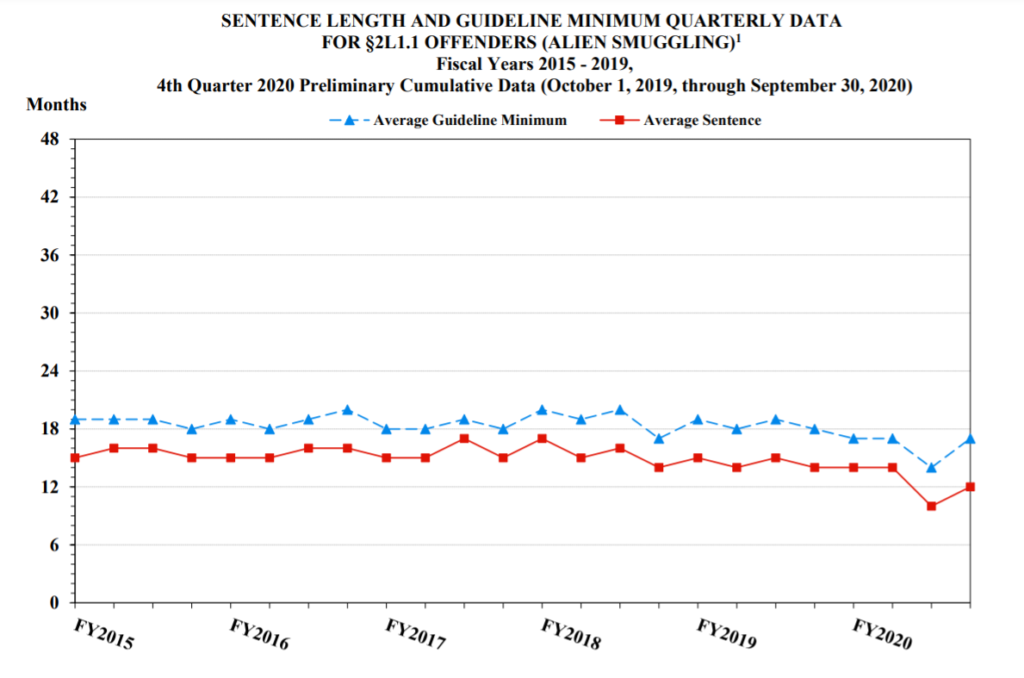
The last report in the series, Length of Incarceration and Recidivism (April 2020), found that offenders incarcerated longer than 120 months were 30-45% less likely to recidivate than a comparable group who received shorter sentences. At the other end of the spectrum, however, the study could not find sufficiently reliable evidence to conclude that shorter incarceration lengths of 12-24 months have either a criminogenic or deterrent effect.
Also in FY 2020, the Commission released a study on the impact of the retroactive application of its 2014 “Drugs Minus Two” amendment on recidivism. The “Drugs Minus Two” amendment reduced by two the offense levels assigned to each drug quantity in the drug trafficking guideline, and as a result about 31,000 federal offenders received a retroactive sentence reduction of 25 months on average. The Commission compared these offenders with a comparable group who served their full sentences and found no statistical difference in their recidivism rates (roughly 28% for the retroactivity group, and 30% for the full sentence group).
In FY 2021, the Commission will release another report studying the recidivism of offenders sentenced under the Armed Career Criminal Act. Recidivism research will continue to be a major focus of the Commission in FY 2021, 2022 and beyond, it said in its FY 2020 preliminary data report.
